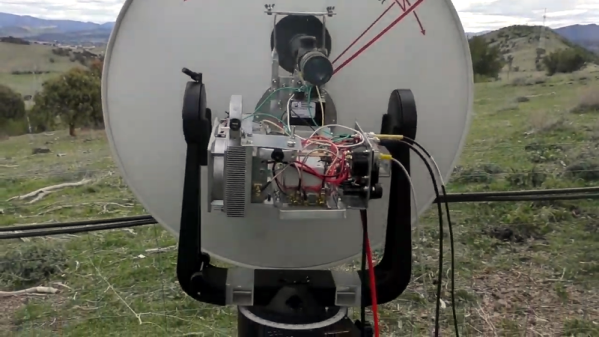There’s something inspiring about echos. Who among us hasn’t called out or clapped hands in a large space just to hear the sound reflected back? Radio takes this to a whole new level. You can bounce signals from buildings, aircraft, the ionisphere, or even the Moon itself. Humans have been bouncing radio waves from the moon for decades. It’s been used at war, and in peacetime. But [Hainbach] might be the first to use it for music.
Earth Moon Earth or EME communication is quite popular with amateur radio operators. With the right equipment, you can bounce a signal off the moon and hear the echo around 2.5 seconds later. The echo isn’t quite normal though. The moon and the earth are both rotating and moving in relation to each other. This causes Doppler shifts. At higher frequencies, even the craters and surface features of the moon can be heard in the echo.
[Hainbach] spent some time learning about moonbounce at a large radio telescope, and wanted to share this strange audio effect with the world. Unfortunately, most of us don’t have the large microwave dish required for this. The next best thing was to create an application which emulates the sound of a moon bounce. To this end, [Hainbach] created a Moon Echo, an audio plugin that emulates a moonbounce.
Moon Echo was created using sounds from a soprano signer and a double bass. [Hainbach] had to be careful not to be too musical, as ham operators are not allowed to broadcast music. This meant all the tests had to be broken into short non-musical clips. Rolling all this empirical data into a model took quite a bit of work, but the end result is worth it.
If you’d like to learn how to moonbounce yourself, check this article out.
Continue reading “Moonbounce Music”
















